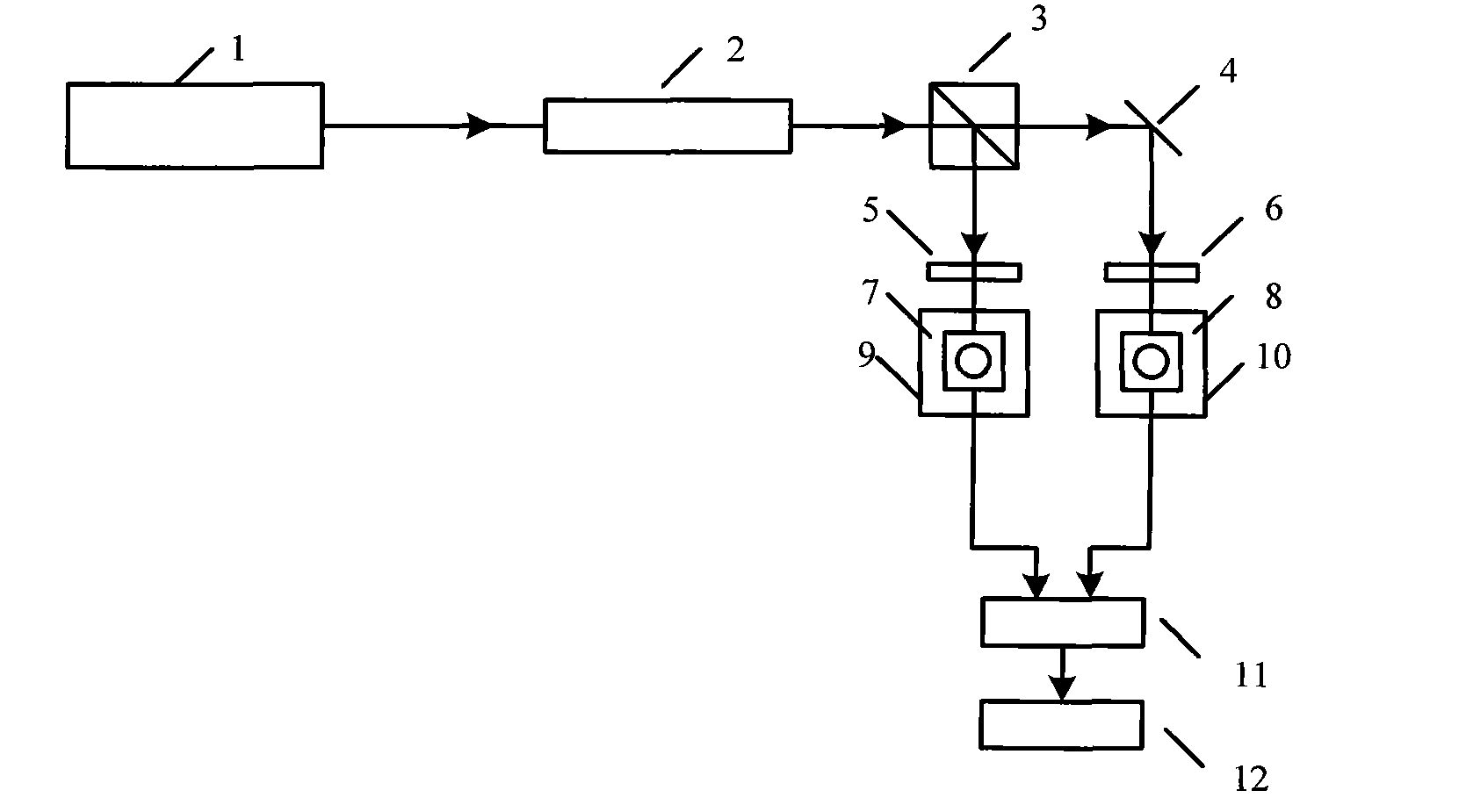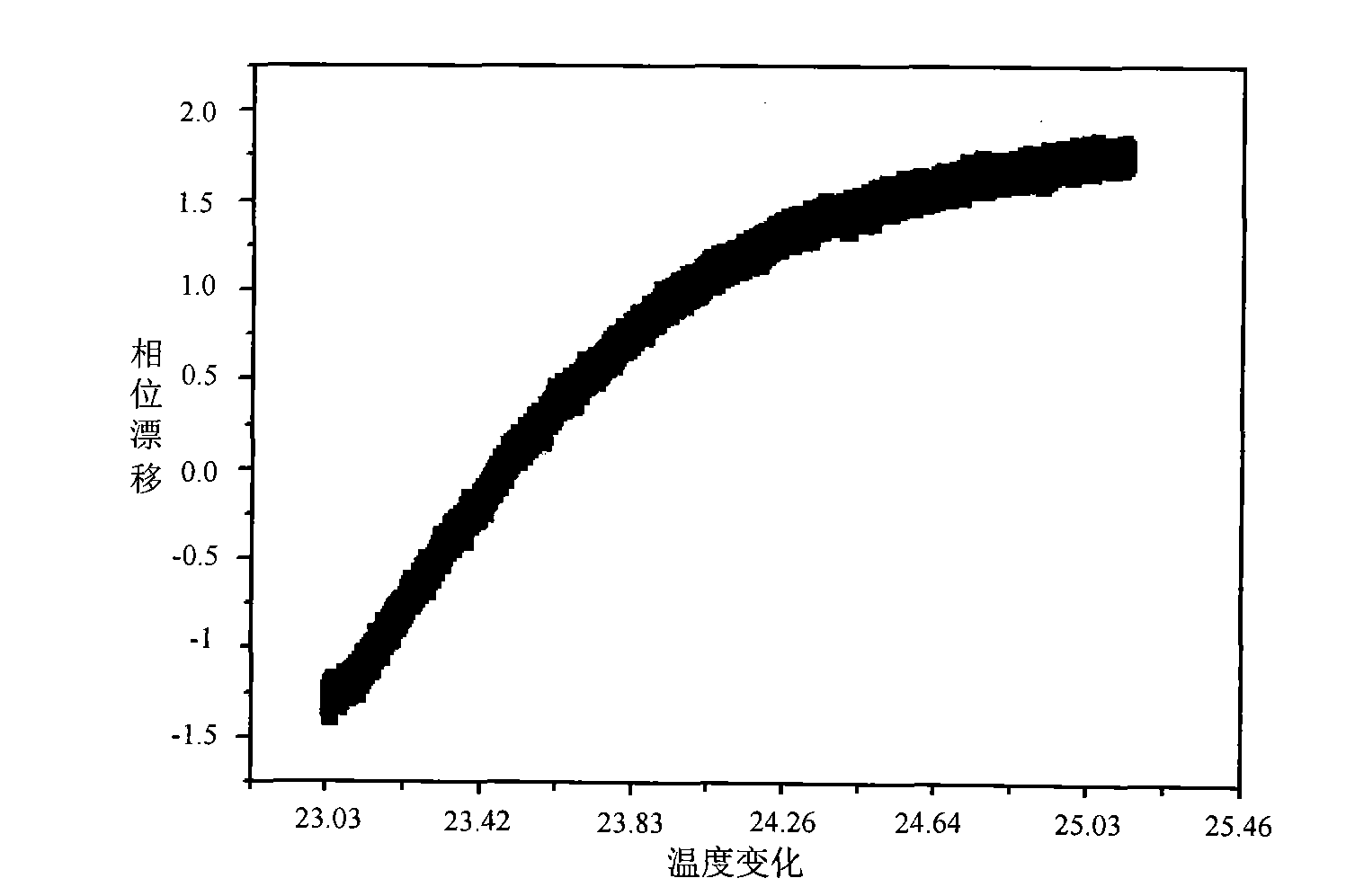Photoelectric receiver temperature coefficient test method based on acousto-optical amplitude modulation
A technology of a photoelectric receiver and a test method, applied in the field of laser applications, can solve the problem of temperature characteristic analysis and experimental test of the electric signal processing circuit without considering the temperature drift error of the electric signal processing circuit, and the influence of the heterodyne interference system without the photoelectric receiver. Test accuracy and other issues
- Summary
- Abstract
- Description
- Claims
- Application Information
AI Technical Summary
Problems solved by technology
Method used
Image
Examples
Embodiment Construction
[0024] The examples of the present invention will be described in detail below in conjunction with the accompanying drawings.
[0025] A method for testing the temperature coefficient of a photoelectric receiver based on acousto-optic amplitude modulation, the steps of the method are as follows:
[0026] (1) Put the standard photoelectric receiver 7 into the temperature-adjustable incubator A9, and put the photoelectric receiver 8 to be tested in the temperature-adjustable incubator B10. The temperature stability of the incubators A and B can reach ±0.1 °C, has no effect on the phase stability of the standard photoelectric receiver 7 and the photoelectric receiver 8 to be tested;
[0027] (2) The single-frequency laser 1 emits a beam of laser light, and after passing through the acousto-optic modulator 2, it becomes a beam including frequencies v 1 and v 2 The dual-frequency laser beam, the polarization directions are mutually orthogonal linearly polarized light in the horiz...
PUM
 Login to View More
Login to View More Abstract
Description
Claims
Application Information
 Login to View More
Login to View More - R&D Engineer
- R&D Manager
- IP Professional
- Industry Leading Data Capabilities
- Powerful AI technology
- Patent DNA Extraction
Browse by: Latest US Patents, China's latest patents, Technical Efficacy Thesaurus, Application Domain, Technology Topic, Popular Technical Reports.
© 2024 PatSnap. All rights reserved.Legal|Privacy policy|Modern Slavery Act Transparency Statement|Sitemap|About US| Contact US: help@patsnap.com









